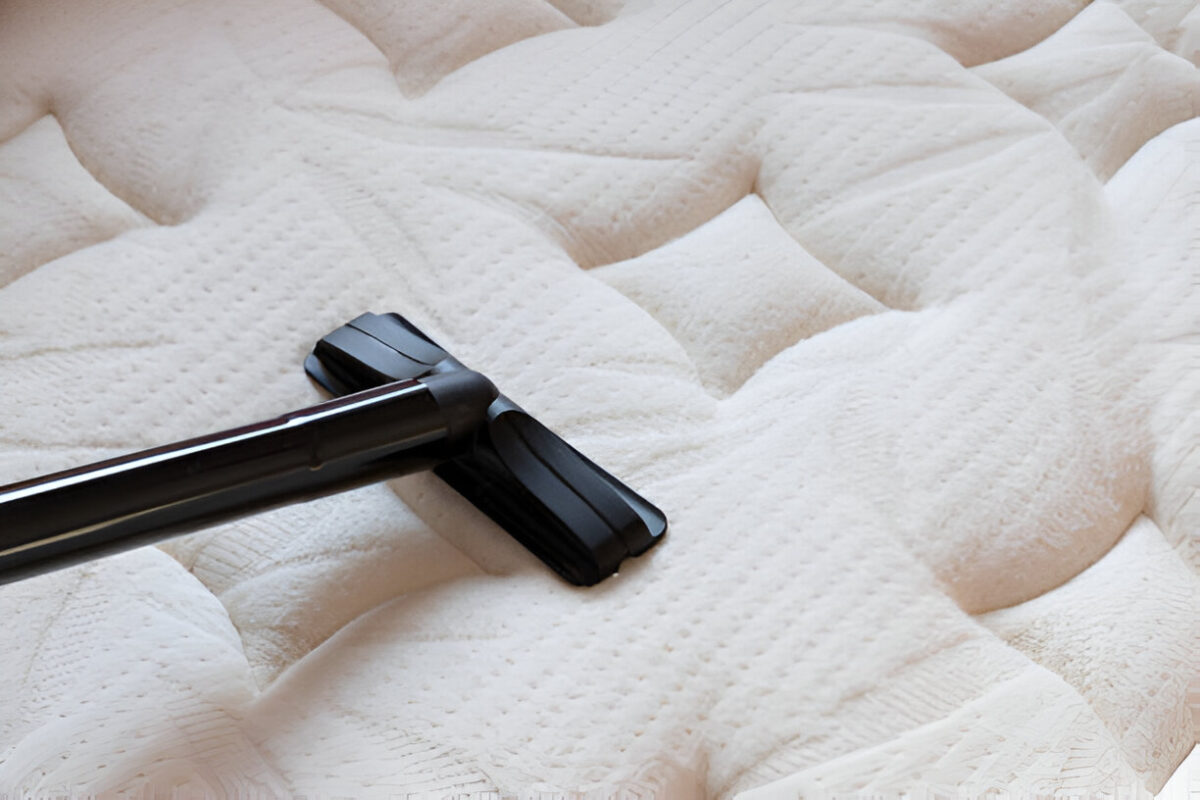Ultimate Spring Allergy-Proofing Guide for Your Home in WA

As the weather warms up and flowers bloom, spring ushers in a sense of renewal. However, for many people in Washington state, it also brings the dreaded allergy season. Pollen fills the air, dust settles into every nook and cranny, and the constant sneezing, coughing, and itchy eyes can make life difficult. But don’t worry—there are ways to allergy-proof your home. Whether you’ve been dealing with spring allergies for years or are just beginning to feel the effects, this guide is packed with practical advice, tips, and real-life solutions to help you make your home a safe haven this spring.
Understanding Spring Allergies in Washington
Before diving into the how-to, it’s important to understand why spring allergies hit so hard in Washington state. During spring, local plants like trees, grasses, and flowers release pollen into the air. This pollen acts as a trigger for those with seasonal allergic rhinitis, commonly known as hay fever. For Washington residents, this is an annual struggle, especially since the mild climate encourages many plants to bloom earlier than in other regions.
On top of pollen, dust mites and mold can add to indoor allergy symptoms. The Pacific Northwest is known for its wet weather, which can create the perfect breeding ground for mold, especially in older homes. For those with asthma or severe allergies, exposure to these triggers can lead to more intense reactions, making it vital to allergy-proof your home as much as possible.
Why You Need to Allergy-Proof Your Home
Living with allergies can affect your daily routine. The constant need to clear your throat, itchy eyes, or sneezing fits can interfere with work, play, and rest. Worse, allergens can accumulate indoors, making your home a breeding ground for the very triggers you’re trying to avoid. By allergy-proofing your home, you reduce your exposure to harmful allergens, creating a more comfortable living space for you and your family.
This isn’t just about comfort; it’s about health. Constant exposure to allergens can lead to increased respiratory problems, trigger asthma attacks, and worsen other chronic conditions. Allergy-proofing is a proactive step in ensuring your home remains a healthy environment, no matter how high pollen counts rise.
The Basics of Allergy-Proofing Your Home
Before jumping into the specifics, let’s talk about the general steps you can take to allergy-proof your house. These are simple but effective changes that can help minimize allergens and create a cleaner, safer indoor environment.
-
Close Windows During Peak Pollen Hours
Pollen counts are typically highest in the morning and evening. During these times, it’s best to keep windows closed, especially if you live near wooded areas, fields, or have flowering plants around your home. By keeping the pollen outside, you prevent it from entering your living space and triggering allergies.
-
Use HEPA Filters
A high-efficiency particulate air (HEPA) filter can remove up to 99.97% of airborne particles, including pollen, dust, and pet dander. Place HEPA filters in your home’s air conditioning system and consider investing in a portable air purifier for your bedroom or living area. This helps reduce indoor allergens and can offer immediate relief.
-
Regularly Clean Your Home
Spring cleaning isn’t just about decluttering or dusting your surfaces; it’s an essential part of allergy control in your home. Dust, pet dander, and other allergens can accumulate on furniture, carpets, and upholstery. Regularly vacuum with a HEPA filter vacuum cleaner, wipe down surfaces with a damp cloth, and wash curtains, bed linens, and other fabric items to remove potential allergens.
Specific Tips for Allergy-Proofing Your Home in WA
Now that we’ve covered the basics, let’s explore some specific strategies you can use to allergy-proof your home in Washington state.
-
Manage the Humidity Levels
The Pacific Northwest’s rainy climate can create a breeding ground for mold, a common allergen. Mold thrives in areas with high humidity, so keeping your home’s humidity levels under control is crucial. Invest in a dehumidifier, especially in damp areas like basements, bathrooms, and kitchens. Aim for a humidity level between 30-50%. Additionally, fix any leaky pipes or roof damage to prevent mold growth.
-
Seal Cracks and Gaps
Spring allergy-proofing isn’t just about cleaning—it’s also about preventing allergens from getting inside in the first place. Seal cracks and gaps in windows, doors, and walls, especially in older homes. Gaps in windows or under doors can let in pollen, dust, and other allergens. By sealing these areas, you reduce the risk of allergens entering your home.
-
Replace or Clean Air Filters
If you use an HVAC system, ensure your air filters are clean or replaced regularly. Dirty filters trap dust, mold spores, and other allergens, circulating them throughout your home. Replace air filters every 1-3 months, and opt for high-quality filters with a MERV rating of 13 or higher for best results. This is one of the most cost-effective ways to allergy-proof your home.
-
Get Rid of Clutter
Clutter around the house provides the perfect hiding spots for dust and allergens. Piles of books, magazines, or unused clothing can trap allergens. Keep your home tidy and organized to limit the amount of dust that accumulates. If possible, use storage bins with lids to keep items stored away and dust-free.
Spring Cleaning for Allergies: The Essentials
When allergy season rolls around, a deep spring cleaning can make a huge difference. Here are the areas you should focus on:
-
Vacuuming and Carpet Care
Vacuuming is one of the best ways to eliminate dust, pet dander, and pollen from your home. Invest in a vacuum cleaner with a HEPA filter. It’s essential for trapping small particles. Pay extra attention to carpets, rugs, and upholstery. If you have area rugs, take them outside and shake them out. For an even deeper clean, consider renting a carpet cleaner or hiring a professional to remove deep-set allergens.
-
Washing Linens and Bedding
Bedding, pillowcases, and blankets can harbor dust mites and pollen. Wash all bed linens in hot water every week to kill any allergens. If you have pets, their fur can accumulate in these areas, exacerbating allergies. For added protection, use allergen-proof covers on pillows and mattresses to keep dust mites away.
-
Cleaning the Air Ducts
Over time, air ducts can collect dust, mold, and other allergens. To prevent these from circulating throughout your home, have your air ducts cleaned professionally. This will ensure that you’re breathing clean, allergen-free air.
Outdoor Allergy-Proofing Tips
Your yard can also contribute to indoor allergens, especially in the spring when pollen levels are at their peak. Here’s how to keep your outdoor space allergen-free:
-
Choose Allergy-Friendly Plants
If you love gardening but want to minimize your allergy symptoms, opt for plants that are less likely to trigger allergies. Choose flowers with low pollen, such as begonias, geraniums, or hydrangeas. Avoid trees like birch and oak that release large amounts of pollen.
-
Rinse Off After Outdoor Activities
After spending time outside, be sure to rinse off immediately. Pollen, dust, and mold spores can stick to your skin, hair, and clothes. This simple step can prevent you from bringing allergens indoors.
-
Keep Your Lawn Trimmed
A well-maintained lawn is essential for controlling allergens. Regularly mow the lawn to prevent overgrowth, which can trap moisture and create an environment for mold and mildew. Keep the grass short to reduce pollen exposure.
Final Thoughts
Spring allergies in Washington can be a real challenge, but with the right strategies, you can allergy-proof your home and enjoy the season without the sneezing fits and constant discomfort. By understanding the common allergens, taking preventive measures like using HEPA filters and cleaning regularly, and maintaining your home’s humidity levels, you can breathe easier.
Remember, allergy-proofing your home is an ongoing process. Stay on top of your cleaning routine, monitor pollen levels, and make adjustments as needed to keep your home comfortable. With these tips, you’ll have a home that’s not only allergy-friendly but also a sanctuary from the seasonal discomforts that come with spring.
If you find that your allergies persist despite your efforts, it’s always a good idea to consult with a medical professional. They can provide guidance on treatments, medications, or lifestyle adjustments that may help you manage your symptoms better.
By following this ultimate spring allergy-proofing guide, you can embrace the beauty of the season without letting allergies hold you back.
thanks hituponviews









